| Listing 1 - 10 of 36 | << page >> |
Sort by
|
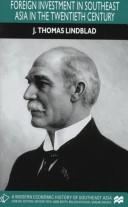
ISBN: 0333720628 Year: 1998 Publisher: London Macmillan
Abstract | Keywords | Export | Availability | Bookmark
 Loading...
Loading...Choose an application
- Reference Manager
- EndNote
- RefWorks (Direct export to RefWorks)
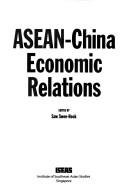
ISBN: 9789812304087 9812304088 9789812304223 9812304223 9789812306562 9812306560 Year: 2007 Publisher: Singapore : Institute of Southeast Asian Studies,
Abstract | Keywords | Export | Availability | Bookmark
 Loading...
Loading...Choose an application
- Reference Manager
- EndNote
- RefWorks (Direct export to RefWorks)
This book, a project of the ASEAN-China Study Programme of ISEAS, is designed to deal with the rapidly expanding economic relations between ASEAN and China in recent years. The fifteen chapters discuss in considerable detail these relations in terms of many important topics such as trade, the ASEAN-China Free Trade Agreement (ACFTA), investments, services trade, energy cooperation, cooperation in developing the Mekong Sub-region, China's aid to Southeast Asian countries, developing stronger business networks, and the political dimensions of China's economic relations with ASEAN. The economic challenges, competition, and opportunities in the various sectors of the two economies are examined in the context of the dynamic development of China, and the inevitable globalization taking place nowadays. The book, with contributions from experts in the various topics covered, will be invaluable to businessmen, analysts, academics, students, and policy-makers.
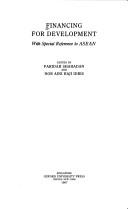
ISBN: 0195888510 Year: 1987 Publisher: Singapore : Oxford university press,
Abstract | Keywords | Export | Availability | Bookmark
 Loading...
Loading...Choose an application
- Reference Manager
- EndNote
- RefWorks (Direct export to RefWorks)
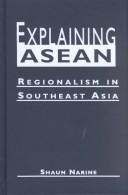
ISBN: 1626373442 9781626373440 1588261298 Year: 2002 Publisher: Boulder, Colorado ; London, [England] : Lynne Rienner Publishers,
Abstract | Keywords | Export | Availability | Bookmark
 Loading...
Loading...Choose an application
- Reference Manager
- EndNote
- RefWorks (Direct export to RefWorks)
Is ASEAN the foundation of a strong regional community in Southeast Asia? Or is it no more than an instrument used by its members to advance their individual interests? Addressing these questions, Shaun Narine offers a comprehensive political analysis of ASEAN from its creation in 1967 through the events of 2001. Reflecting both the accomplishments and the limitations of the organization, Explaining ASEAN explores issues of regional security, economic stability--and the growing expectations of the international community. Narine's trenchant analysis makes it clear that, unless ASEAN can resolve the problems of inadequate resources and disagreements among the member states, its future as an effective, active international regime is doubtful.
Regionalism --- ASEAN. --- Association of Southeast Asian nations --- Southeast Asia --- Politics and government --- Economic conditions.
Book
ISBN: 1282441329 9786612441325 9812833919 9789812833914 9789812833907 9812833900 9781282441323 6612441321 Year: 2009 Publisher: Singapore ; Hackensack, NJ : World Scientific Pub. Co.,
Abstract | Keywords | Export | Availability | Bookmark
 Loading...
Loading...Choose an application
- Reference Manager
- EndNote
- RefWorks (Direct export to RefWorks)
On the historic occasion of the 40th anniversary of the founding of the Association of Southeast Asian Nations (ASEAN) in 2007, the leaders of the ten-member countries signed the ASEAN Charter. This is an important milestone for the regional group as the Charter will make ASEAN stronger, more united and more effective. The Charter embodies the ASEAN community's purposes and principles, organs and decision-making process; a new legal personality; a system for the settlement of disputes; and an ASEAN Human Rights Body.
South Asian cooperation. --- Asian cooperation --- ASEAN --- Association of Southeast Asian nations --- History. --- Southeast Asia --- Asia, Southeast --- Asia, Southeastern --- South East Asia --- Southeastern Asia --- Economic policy. --- Cultural policy. --- Industrial economics --- International economic relations --- Association of Southeast Asian Nations --- Asia
Book
ISBN: 9780230319264 Year: 2012 Publisher: Basingstoke Palgrave Macmillan
Abstract | Keywords | Export | Availability | Bookmark
 Loading...
Loading...Choose an application
- Reference Manager
- EndNote
- RefWorks (Direct export to RefWorks)
Book
ISBN: 9814762407 9814762415 9789814762410 9789814762403 Year: 2017 Publisher: Singapore : ISEAS Yusof Ishak Institute,
Abstract | Keywords | Export | Availability | Bookmark
 Loading...
Loading...Choose an application
- Reference Manager
- EndNote
- RefWorks (Direct export to RefWorks)
The level of outward foreign direct investment (OFDI) flows from ASEAN countries has increased rapidly in the past two decades. This book examines OFDI trends and patterns in the ASEAN region, including the impact of the ASEAN Economic Community. It also provides analyses of country policies affecting OFDI and the drivers of OFDI in Indonesia, Malaysia, Singapore and Vietnam. Myanmar is studied as an investment frontier for other ASEAN countries.
'The dynamic economies of Southeast Asia have historically been very large recipients of foreign direct investment (FDI). As global capital markets have opened up, and these economies have developed their technological and commercial capabilities, in more recent years Southeast Asia has emerged as a significant source of outward FDI both within the region and beyond. This important volume, by a group of leading regional scholars, offers a timely, comprehensive, accessible and authoritative analysis of this phenomenon.' - Hal Hill, H.W. Arndt Professor of Southeast Asian Economies, Arndt-Corden Department of Economics, Crawford School of Public Policy, Australian National University
Investments, Southeast Asian. --- Investments, Foreign --- Southeast Asian investments --- Investments, Southeast Asian --- E-books --- ASEAN. --- Association of Southeast Asian nations
Book
ISBN: 9004257098 9789004257092 900425708X 1299847552 9789004257085 Year: 2013 Publisher: Leiden : Martinus Nijhoff Publishers,
Abstract | Keywords | Export | Availability | Bookmark
 Loading...
Loading...Choose an application
- Reference Manager
- EndNote
- RefWorks (Direct export to RefWorks)
Since the end of the Cold War, Northeast Asia has been one of the most dynamic and dangerous parts of the world. Encompassing Japan, the People’s Republic of China, and North and South Korea, the region has undoubtedly acquired a greater global geopolitical and economic significance in recent years. Now home to two of the three largest economies in the world, with the exception of North Korea, all of the countries in the region experienced rapid economic development which has resulted in Northeast Asia accounting for one-fifth of world production, one-sixth of world trade, and one-half of the world’s foreign currency reserves. This great economic dynamism is complemented by the tremendous political forces that animate the region, such as China’s ascendency to a global power challenging the United States and the European Union, tensions over nuclear weapons on the Korean peninsula, and Japan’s desire to validate itself as a legitimate international force with a permanent seat on the UN Security Council. All of these modern issues faced by the region are matters of international law. Northeast Asian Perspectives on International Law: Contemporary Issues and Challenges contends that international law is not only poised to take a bigger role in bringing about a resolution to these questions, but international lawyers of the region are working to bring about greater regional cooperation and integration as seen in other regions in the world. This edited volume was inspired by the first joint international academic conference of international lawyers from the Chinese Society of International Law, Japanese Society of International Law, and Korean Society of International Law which took place in Seoul, Korea on July 3, 2010. With a range of timely topics including, but not limited to, North Korean human rights, the South China Sea, and Japan’s efforts in UN peacekeeping operations, the esteemed contributors to Northeast Asian Perspectives on International Law: Contemporary Issues and Challenges examine how international law can promote peace and justice in Northeast Asia. Legal scholars, students of international law and international relations, policymakers and historians will find Northeast Asian Perspectives on International Law: Contemporary Issues and Challenges to be an invaluable resource.
International law --- Law of nations --- Nations, Law of --- Public international law --- Law --- ASEAN. --- Association of Southeast Asian nations
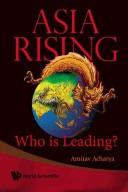
ISBN: 1281911739 9786611911737 9812771344 9789812771346 9812771336 9789812771339 9781281911735 Year: 2008 Publisher: Singapore ; Hackensack, NJ : World Scientific,
Abstract | Keywords | Export | Availability | Bookmark
 Loading...
Loading...Choose an application
- Reference Manager
- EndNote
- RefWorks (Direct export to RefWorks)
China, India and Japan are among the biggest players in the global economy. This book includes two central themes - conflict and cooperation. It covers issues such as the rise of China, Asia's leadership legacy and the role of ASEAN. It discusses the fate of democracy in Asia, and the implications of dangers and the changing world order for Asia.
Regionalism --- Asian cooperation. --- International cooperation --- ASEAN --- Association of Southeast Asian nations --- History --- Asia --- Politics and government --- Foreign relations.
Multi
ISBN: 9783030590543 9783030590550 9783030590567 9783030590536 Year: 2021 Publisher: Cham Springer International Publishing :Imprint: Springer
Abstract | Keywords | Export | Availability | Bookmark
 Loading...
Loading...Choose an application
- Reference Manager
- EndNote
- RefWorks (Direct export to RefWorks)
This book presents a varied and multi-dimensional view of challenges of governance in Southeast Asia and ASEAN through the variety of disciplines and nationalities involved. In light of 50 years of regional collaboration and integration as the member states of ASEAN seek to chart out a future path for the region, this book is dedicated to showcasing different challenges to governance that occur due to internal and external pressures for the various member states. The editors are particularly interested in the multi-level governance challenges on issues of democracy, equity, and sustainability, the adaptation of policies and norms to fit an ASEAN way, and the changing roles of civil society and citizens in this process of seeking a common identity and voice. The book is divided into four sections. The first section introduces the fundamental political institutional dynamics that are in play within the region and the interplay between regional forces and national norms. The second section tackles the economic and legal discourses that various member states face in relation to external and internal pressures related to international and regional trade and industry. The third section focuses on issues of sustainability and equity resulting from the vast socio-spatial differences in the varied cities and regions of member states. In the final section, the authors discuss dilemmas resulting from economic growth in exploitative industries and the impact that has on the local and regional community through the lenses of inclusivity and justice. Written by a diverse collection of policy makers, researchers, educators and activists from the regions discussed, this book provides an authoritative first-hand analysis of key challenges to governance in Southeast Asia and ASEAN. As such, this volume is an excellent resource for academics, advanced masters and PhD candidates interested in the region, and major Southeast Asian research institutes and centers as well as policy makers and influencers at both national and regional levels within the region.
International relations. Foreign policy --- Politics --- Economics --- Public administration --- internationale politiek --- overheid --- politiek --- Asia --- Association of Southeast Asian Nations --- Southeast Asia
| Listing 1 - 10 of 36 | << page >> |
Sort by
|

 Search
Search Feedback
Feedback About UniCat
About UniCat  Help
Help News
News